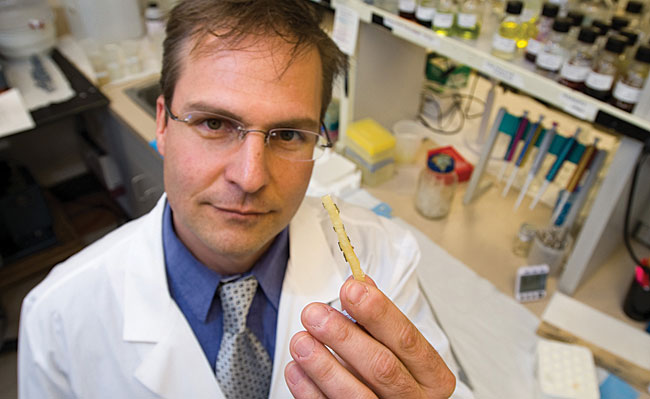THE UNIVERSITY OF MONTANA
2008 PRESIDENT'S REPORT

International Heart Institute of Montana
Just as the nature of war is changing in the 21st century, so, too, is the practice of battlefield medicine. Blood loss from extremity wounds is now the leading cause of preventable death in U.S. military operations. Wartime surgeons, taught to value life over limb, often are forced to amputate when they can’t repair vascular damage on the battlefield. The U.S. Department of Defense wants a better solution, and they’ve given the International Heart Institute of Montana $2 million to test one.
IHI, a collaboration between UM and St. Patrick Hospital, may have the answer. Doctors and researchers have developed a patented method of treating a section of a cow’s artery, stripping it of its cells and freeze-drying it. Just add saline, whether in a modern surgical suite or in a battlefield combat hospital, and the artery can be grafted into a human body to repair vascular damage.
“It’s a biological matrix in which native cells can grow and repopulate,” says Dr. Stephen Tahta, principal investigator for IHI’s research. “This graft has the potential to stay open longer than anything we currently have.”
The vascular graft is sterile, freeze-dried and can be stored at room temperature – perfect qualities for a mobile military. So far the graft has been successfully implanted in sheep. Tahta hopes the FDA will approve the product for human testing in a year. UM faculty and students have been involved in this research since it began in 1999. If and when the vascular graft hits the market as a commercial product, the profits will be divided among the University, the hospital and the institute.
contents|um home
University Relations
The University of Montana-Missoula
32 Campus Drive | Missoula, MT 59812
phone 406-243-2522 | fax 406-243-4520
© 2008 The University of Montana
